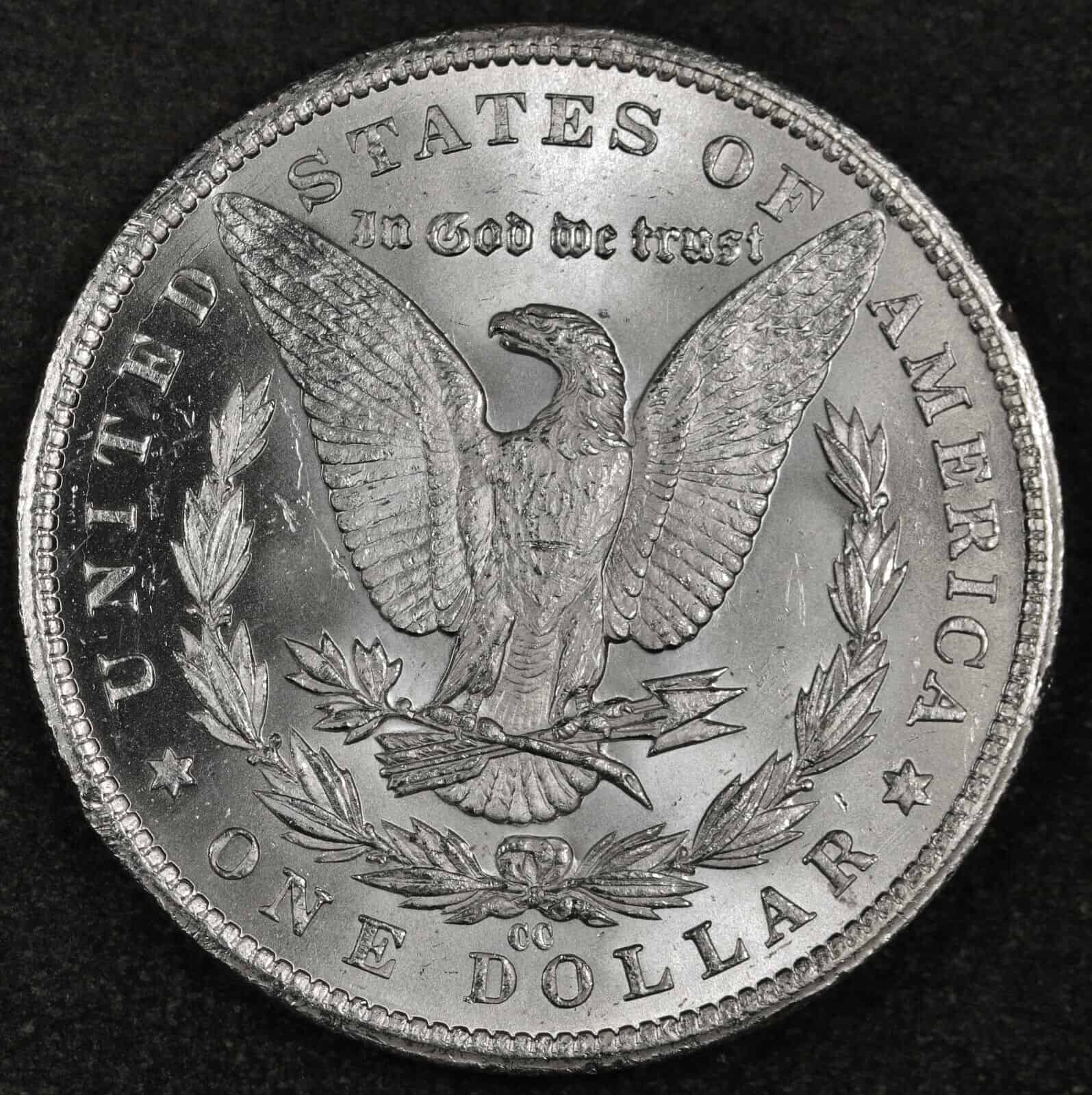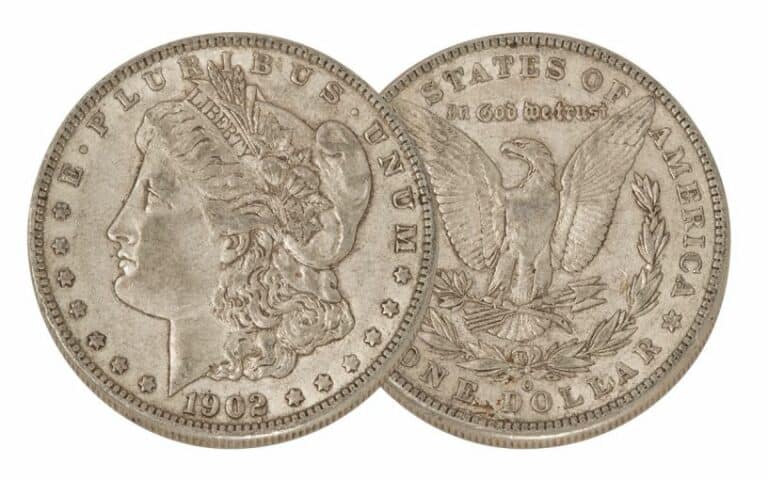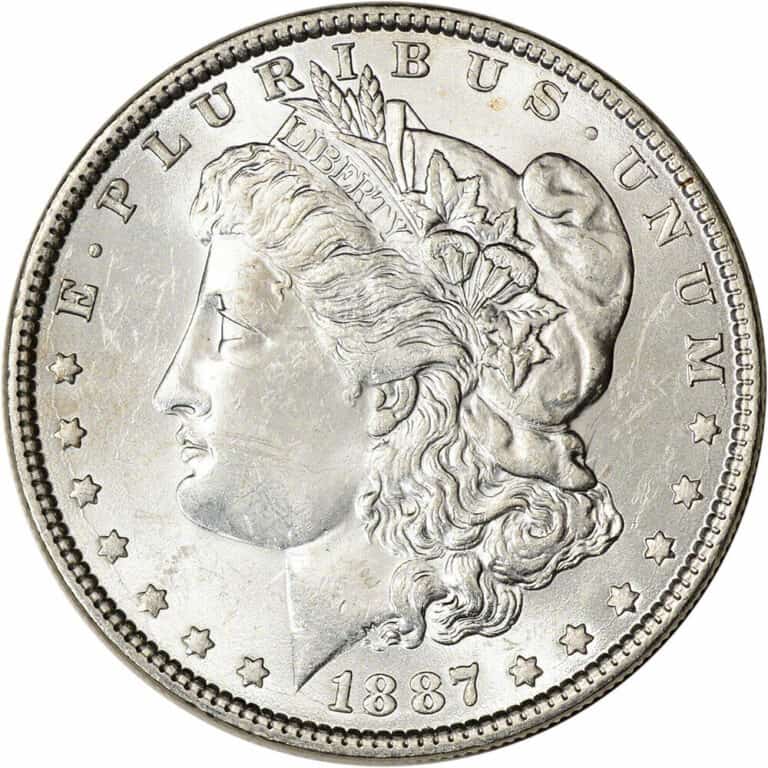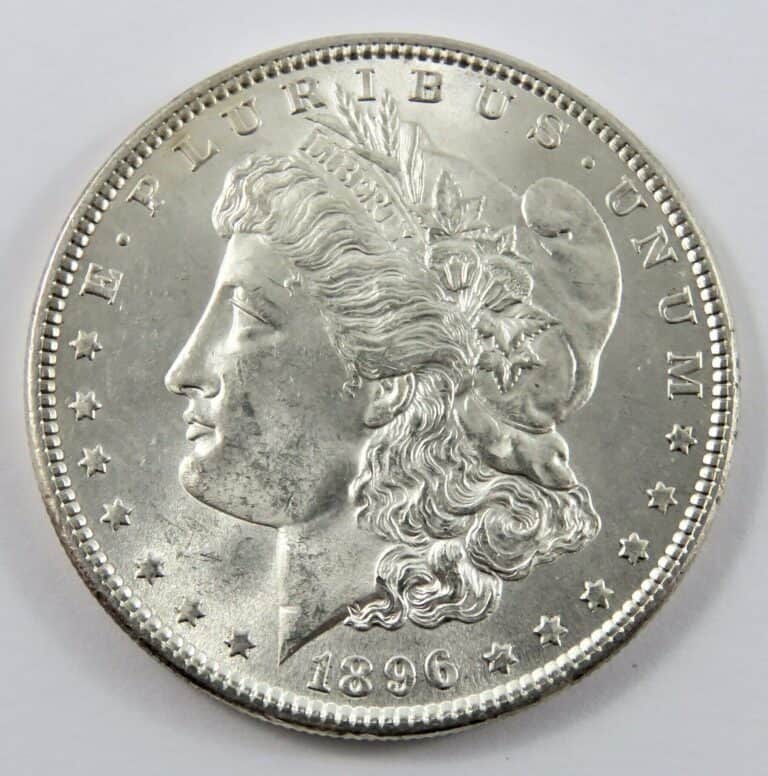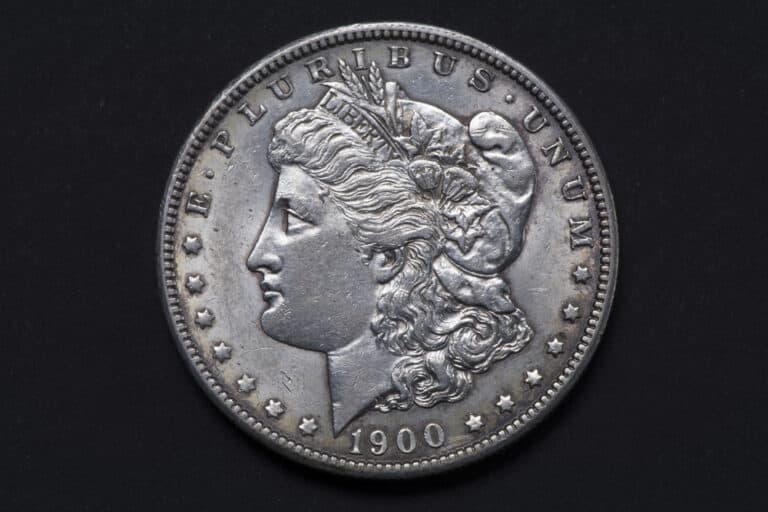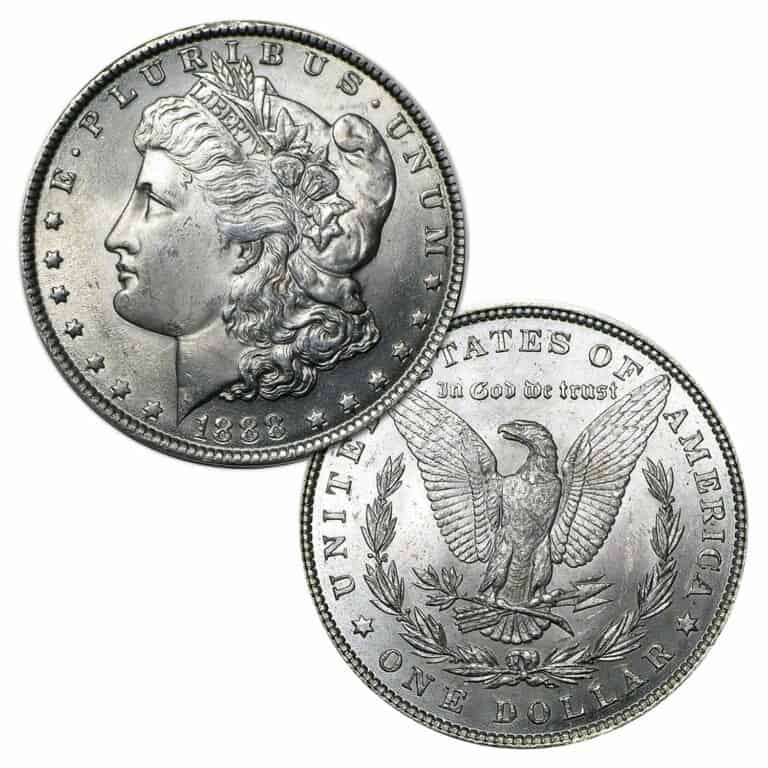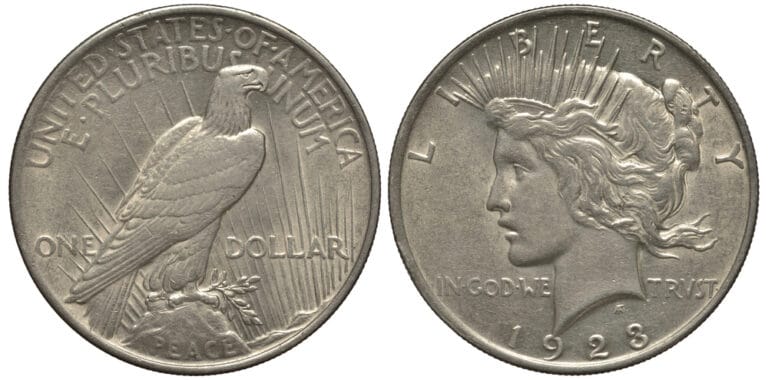1885 Silver Dollar Value: How Much is it Worth Today?
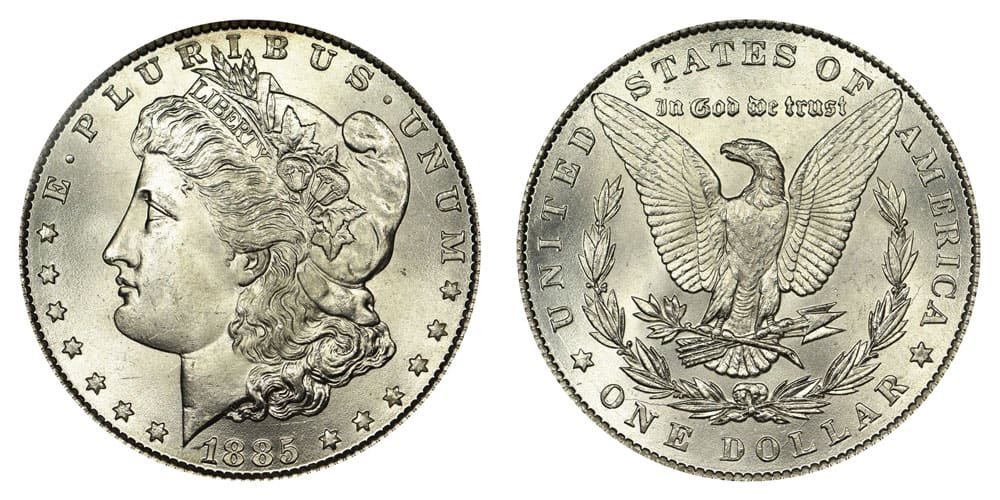
George T. Morgan is well-known in U.S. mintage history as the Chief Engraver from 1917 to 1925. He worked on many stunning and regal coins, like the reverse sides of the Columbian half dollar and the McKinley Birthplace Memorial gold dollar.
But one of Morgan’s biggest achievements—by which people remember him most—is the Morgan silver dollar, which ran from 1878 to 1921. One of the most interesting issues of the iconic Morgan silver dollar is the 1885 run.
Curious about the 1885 silver dollar value? We’ll tell you why some of these coins are immensely valuable today, as well as some rare errors to look out for in your Morgan dollars. Read on to find out more!
1885 Silver Dollar Value Chart |
||||||
| Mint Mark | Good | Extremely Fine | AU58 About Uncirculated | MS62 Uncirculated | MS65 Gem Uncirculated | MS67 Superb Gem Uncirculated |
| 1885 No Mint Mark Silver Dollar Value | $35.50 | $50 | $62 | $85 | $225 | $1,950 |
| 1885 “CC” Mint Mark Silver Dollar Value | $550 | $650 | $735 | $800 | $1,250 | $9,750 |
| 1885 “O” Mint Mark Silver Dollar Value | $35.50 | $50 | $62 | $85 | $225 | $1,200 |
| 1885 “S” Mint Mark Silver Dollar Value | $35.50 | $80 | $180 | $335 | $1,750 | $62,500 |
1885 No Mint Mark Silver Dollar Value

The planning for the Morgan silver dollar first sprang into action in 1877. That year, Henry Linderman, the U.S. Mint Director, held a competition between Chief Engraver William Barber and his assistant George T. Morgan to see whose design would be a better fit for the new dollar coin.
What people didn’t know was that Linderman set the contest up to give Morgan the spotlight. Linderman wasn’t happy with Barber’s work thus far, so he wanted to give Morgan a chance.
Morgan was enrolled at the Pennsylvania Academy of the Fine Arts as an art student. He recruited Anna W. Williams, another art student, to model for him a Lady Liberty. She was reluctant to help at first but eventually agreed on the condition that her identity remain anonymous.
The result of this collaboration was the iconic obverse of the Morgan silver dollar. Lady Liberty faces left with “E pluribus unum” above her and the date underneath, separated by stars.
And on the reverse, we see an eagle with its wings spread, sitting on some branches. The public would later call out this eagle for looking too thin and scrawny, earning this coin the nickname “buzzard dollar.” Around the coin, “United States of America” and “One Dollar” are written.
A tiny “M”—for Morgan—is seen on both sides of the coin. On the obverse, it sits on Liberty’s truncated neck. On the reverse, it’s on the ribbon tying some of the branches together. The coin’s mint mark is seen right below these tied branches as well.
In 1885, the Philadelphia Mint produced over 17.7 million Morgan dollars. That accounts for more than half of the dollar coins made that year across all Mints. As is common with most Philly-minted coins, the 1885 (P) silver dollars did not have mint marks.
The Morgan dollar is made of 90% silver and 10% copper, making it innately valuable today, even in circulated conditions. This is apparent in the Philadelphia coins, even if they’re not so scarce.
Even in poor, circulated condition, an 1885 (P) silver dollar can be valued at around $33.50 today. Coins in the highest circulated grades can go up to almost $65.
Many of the 1885 (P) silver dollars survived in mint-state grades. So, it’s quite easy to collect these coins even in higher gem grades. But even if they’re relatively common, they’re still worth a pretty penny if put up for auction today.
At MS62, the Philadelphia 1885 silver dollars are valued at $85. Three grades up at MS65, the price shoots up to $225. In the near-perfect coin grades of MS67 and MS68, these silver dollars can go up to $1,950 and $8,500, respectively.
And if you hit the jackpot of scoring an MS68+ 1885 (P) silver dollar, you will be looking at a whopping $40,000 for your coin.
1885 “CC” Mint Mark Silver Dollar Value
Back in the 1800s, the mintage for coins was always way lower than they are today because silver was limited in the country’s reserves. However, the Carson City production of the 1885 Morgan silver dollars was insanely low even for its time.
Carson City struck just shy of 230,000 silver dollars in 1885. It would be the last year this Mint created these coins until production picked up again in 1889. Because these coins are so rare, the CC coins are among the most valuable in the 1885 dollar series—especially in circulated condition.
That said, almost 70% of the mintage of the 1885 CC silver dollar survived throughout the decades, as they were kept in the U.S. Treasury vaults before being sold off in the 1970s. That made it much easier today to collect these rare 1885 CC silver dollars.
Even a circulated CC coin in poor to good condition can be sold today for anywhere between $440 and $550. In AU58, the highest circulated grade a coin can get, the price increases to $735.
In uncirculated conditions, the value continues to shoot up exponentially for these 1885 CC silver dollars. An MS62 coin is valued today at $800. At MS65, you might be able to sell your CC silver dollar for almost $1,300.
And if you have an MS67 1885 CC silver dollar with brilliant luster and toning, you can sell it today for about $9,750. One MS67 1885 CC dollar was even sold for an insanely large sum of $19,200 in 2019 because of its gorgeous white frost.
1885 “O” Mint Mark Silver Dollar Value
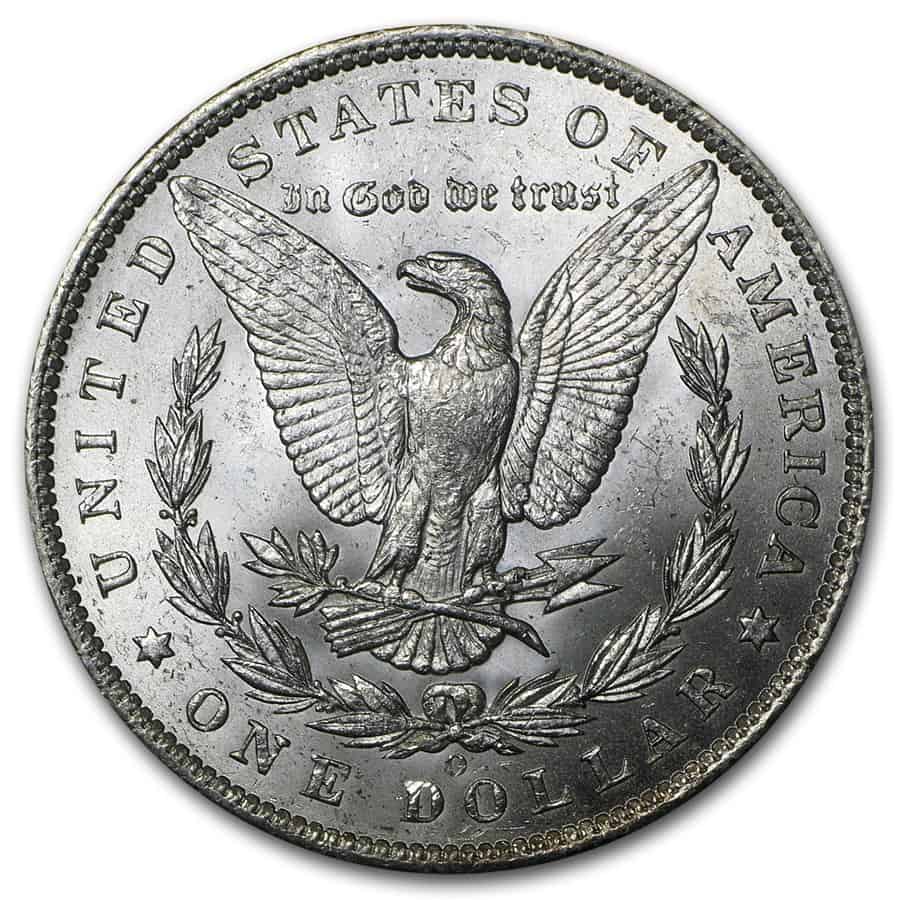
Meanwhile, in the New Orleans Mint, 9 million silver dollars were made in 1885. What’s strange is that many of these coins weren’t put into circulation that year or even that century.
Instead, they sat in bags in the U.S. Treasury vaults and were only released for selling and collecting in the 1960s. Because they were so accessible as recently as 60 years ago, the 1885 O silver dollar is quite common today, making it easy to find and collect in uncirculated grades.
The prices of the New Orleans-minted 1885 dollars are most similar to their Philadelphia counterparts. In circulated condition, you could sell any of these coins with an “O” mint mark for $33.50 to $62.
In uncirculated conditions, these dollars are most common from grades MS63 to MS65, MS64 being the most plentiful within that range. These coins can go for anywhere between $110 to $225.
And when your 1885 O silver dollar is in almost perfect condition with gorgeous eye appeal and limited contact marks, you can be sure to get good money from it. Superb gems like coins graded MS67 and MS68 can be sold for around $1,200 and $17,500, respectively.
1885 “S” Mint Mark Silver Dollar Value
In 1885, the San Francisco Mint created a little less than 1.5 million silver dollars. That makes it the series’ second lowest mintage for that year, just after Carson City. Because of that, “S” 1885 silver dollars are also quite valuable.
Plenty of 1885 S silver dollars were put into circulation right away. So, their value in circulated condition doesn’t differ much from coins minted in Philly or New Orleans. In good condition, these circulated coins can go for $33.50. At AU58, the price shoots up to $180.
However, many of them were kept in bags for decades, where they ended up rubbing against each other and creating contact marks on each other’s mint-state surfaces.
As a result, uncirculated 1885 S silver dollars in higher grades are very rare, making them even more valuable than their Carson City Counterparts. For example, a San Francisco coin at MS65 would be valued at $1,750—$500 more than the Carson City equivalent at $1,250.
The most valuable of the 1885 S silver dollars are those graded MS66 and MS67—grades that only the most brilliant and shiny coins get. If you have one of these coins, you can expect to sell it for $5,250 to a magnanimous price of $62,500.
1885 Silver Dollar Grading
One way to assess your 1885 silver dollar’s coin grading is to check on the highest points of the coin for wear and smoothness.
These areas include the hair right on top of Miss Liberty’s ear and eye, as well as the folds in her cap. You might also want to look at the scrawny eagle’s breast, which is very detailed.
The more detailed and bold the lines still are, the higher the chances of your coin being uncirculated. If the coin is worn and flattened in those areas, it’s probably a coin immediately put into circulation.
Need some help training your eye to grade 1885 Morgan silver dollars? Check out this easy-to-follow guide:
Rare 1885 Silver Dollar Error List
The U.S. Mint got rid of all the 1885 silver dollar coins that had errors before putting each batch into circulation. So, it can be difficult to look for errors on these coins. But when they do show up, mint errors increase the value of these silver dollars by a ton.
Here are some mint errors on the 1885 silver dollars that might pique your interest.
1885 Silver Dollar Struck Off-Center Error
A coin is struck off-center when it is punched not in the exact center of the planchet, but closer to its edge. This error then leaves a part of the planchet blank, giving it a strange, off-center look.
An 8% off-center error has been found on an 1885 O silver dollar with grade AU53. The off-center strike was very obvious when you looked at the lower rim of the coin, which looked a bit blank. This coin ended up selling for over $1,500.
1885 Silver Dollar S/S Repunched Mint Mark Error
Another error found in the 1885 silver dollar is a repunched mint mark error. This one was more exclusive to the San Francisco-minted coins, which have an “S” mark.
A repunched mint mark coin will have an obvious second impression of that tiny S on the reverse as if a die restamped it to correct an improper alignment of the first mint mark. At MS65, an 1885 silver dollar with this error can be sold for around $1,400.
1885 Silver Dollar Partial Collar Strike Error
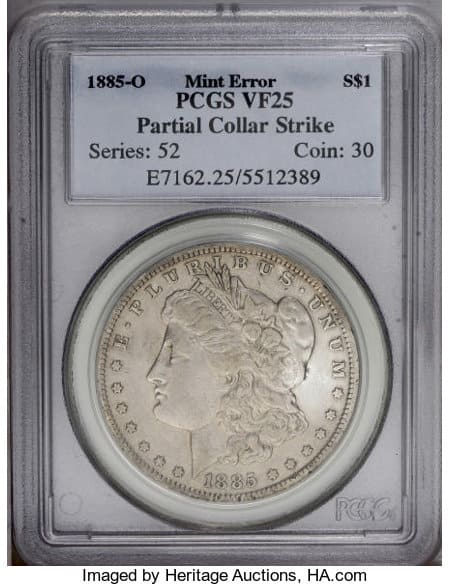
When a coin has a partial collar strike, it means that the planchet was sitting askew on the machine collar before it was punched. As a result, some of the metal might have been driven into the die, making it expand beyond the boundaries of its intended shape.
Because of this, coins with a partial collar strike look like they were stepped on or run over by a railroad, earning them the nickname “railroad rim coins.”
This error was once found in an 1885 O silver dollar in grade VF25. It sold for around $75. Without an error like this, a VF25 is only valued at $42, meaning the partial collar strike error almost doubled its price.
1885 Silver Dollar FAQs
How can you tell if a 1885 silver dollar is real?
If you want to know for sure that your 1885 silver dollar is authentic, check if the coin will be attracted to a magnet. Silver isn’t magnetic, so if your coin clings to a magnet, it’s definitely a counterfeit coin.
What mint marks are on 1885 silver dollars?
There are four different varieties of 1885 silver dollars, but only three of them have mint marks. A CC” mint mark stands for Carson City, an “O” stands for New Orleans, and an “S” is for San Francisco. The Philadelphia Mint did not put a mint mark on their issue of the 1885 silver dollar.
Which mint mark is worth more?
Coins from U.S. mints that make the lowest number of coins per issue usually become the most expensive as time goes on. This is because scarcer coins are rarer, and therefore more valuable.
For the 1885 silver dollar, it’s Carson City and San Francisco that made the fewest coins. So, “CC” and “S” are the mint marks worth the most.
